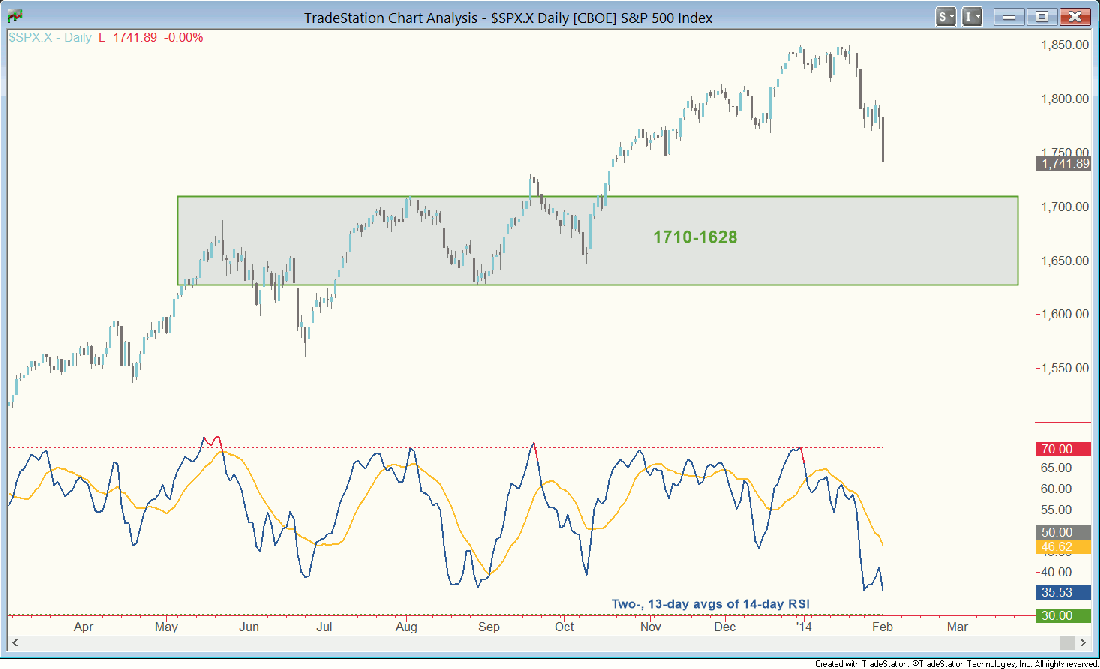One of the fundamental rules for position traders is to buy at demand zones and go short at supply zones.
A demand zone is a price area beneath the current market in which a lot of buying and selling took place in the past, making it a point that the crowd will likely anchor to psychologically when timing new asset purchases (“If the market rallied from there before, maybe it will do so again.”).
The S&P 500 is currently in no-man’s land – free-falling and not yet at a demand zone. Additionally, there isn’t any evidence that the market is close to a point of seller exhaustion, as the relative strength index (RSI) averages are still well above the 30 oversold threshold. So there isn’t any reason to expect the downtrend from the January high to be over. The nearest demand zone is at 1710-1628, based on the congestion spanning May to October 2013.

Position traders should be looking for basing activity – a period of churning after a downtrend in which control shifts to the buyers – in this demand zone before positioning for the next near-term uptrend. It would help to see evidence of improvement in momentum as well.
PRESERVE CAPITAL
Until there’s evidence of a change in trend, don’t act on long set-ups, and remind yourself that doing nothing is sometimes the best way to preserve capital.




